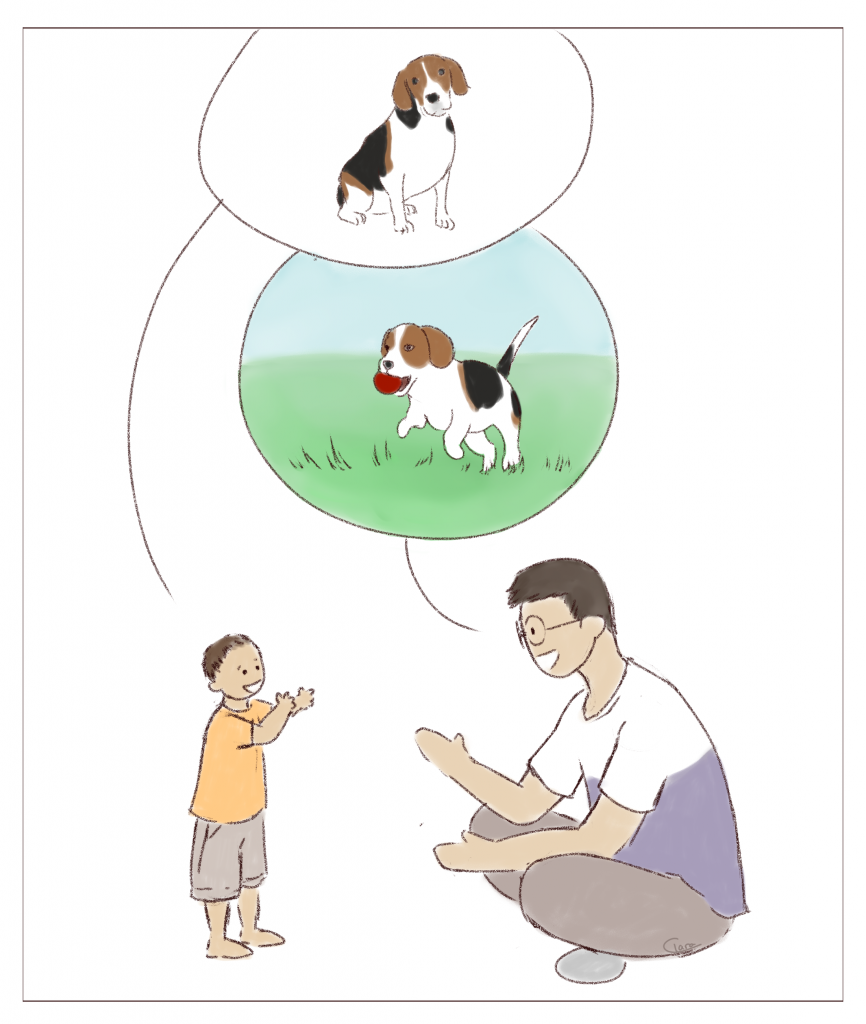How do I develop my child’s communication skills?

Conversations are one of the cornerstones of communication. We have conversations all the time, from very brief ones when we ask a store clerk about a product to hour long phone calls with our best friends. A full-fledged conversation with a young child, however, can seem just impossible. Young children may say just some words or very rudimentary sentences. A good way to build a conversation with your child is to ‘recast’. Recasting is expanding on what your child says. If the child says ‘dog’, a recast would be: “Yes, that’s a dog” or “Yes, it is! What sound do dogs make?”
You can make a simple or complex recast. You can expand just a little on what your child said in a simple recast. You can use a word a child said in a sentence (e.g., “Yes, that’s a dog”) or add some more information (e.g., “What a big dog!”). Or you can continue to engage your child in a conversation in a complex recast. You can ask the child a question (e.g., “It looks like granny’s dog. Don’t you think so?”). You can think of simple and complex recastings like brief or long conversations, respectively.
Through recasting you can engage your child in conversations, setting a strong foundation for verbal communication. To top it all off, your child will be hearing many new words and grammar!
The scientific sources for our comic:
Baker, N. D., & Nelson, K. E. (1984). Recasting and related conversational techniques for triggering syntactic advances by young children. First Language, 5(13), 3-21.
Saxton, M. (2005). ‘Recast’ in a new light: insights for practice from typical language studies. Child Language Teaching and Therapy, 21(1), 23-38.
Nicholas, H., Lightbown, P. M., & Spada, N. (2001). Recasts as feedback to language learners. Language learning, 51(4), 719-758.
